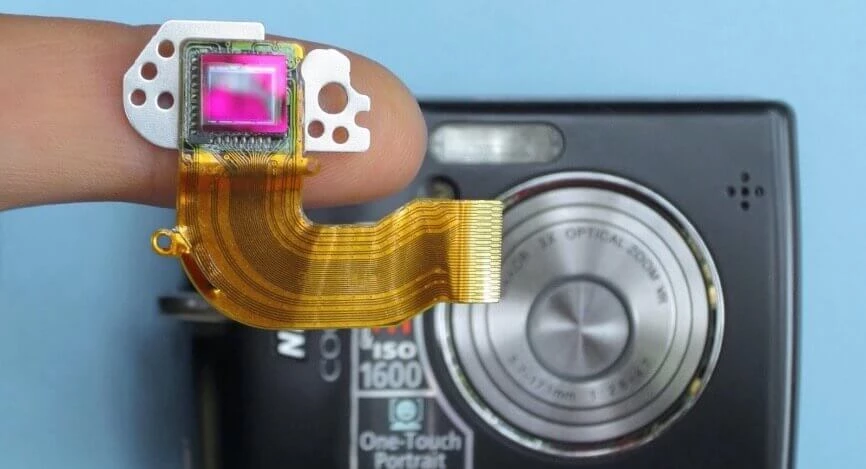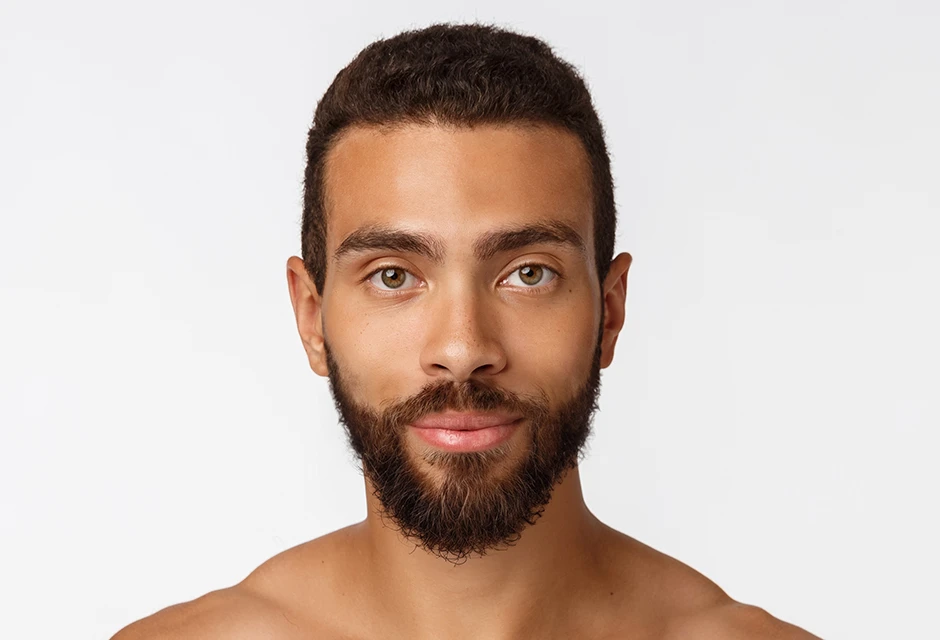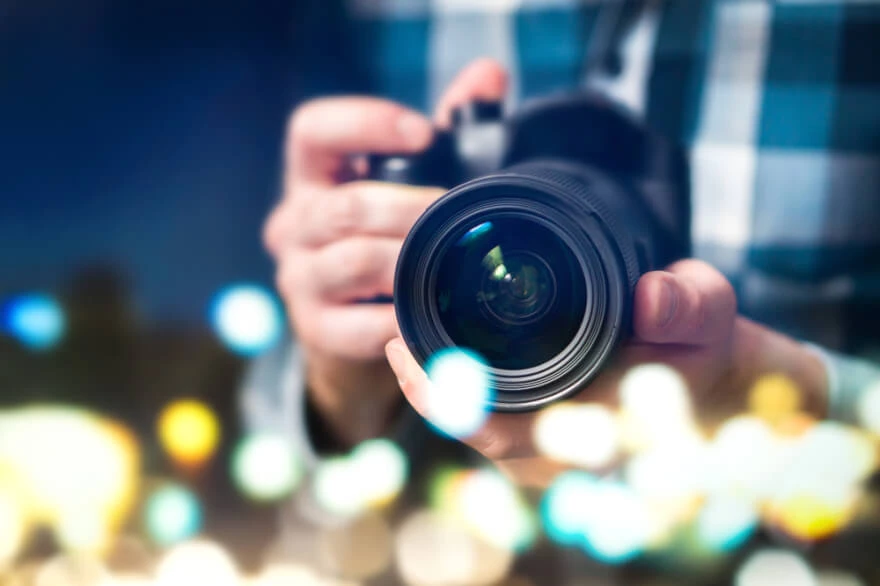Why is image-sensor size so important?

- Camera sensor size explained
- Digital camera sensor size comparison
- Sensors manufacturing types
- Full frame sensor
- Micro 4/3 sensor
- APS-C sensor
- More specific sensors
- 1” and 1/2.55”
- Medium Format sensor
- Camera sensor size chart
If you are about to buy a new camera, you might think about certain specifics of one or another camera. There are multiple things that are important in devices like that, such as lens, aperture, size, and other various parts. But an image-sensor could be indisputably considered as a heart for any camera because it does the most valuable work.
The image sensor is the most crucial part of a camera which is responsible for image capturing. Overall sensor capabilities define captured image quality. The camera sensor consists of pixels, which accumulate photons - the light particles which go inside right after lens opening. The light itself consists of information like color and intensity. The intensity of the light and outgoing image exposure also depends on aperture size, that is the hole in your lens which interacts with the camera sensor, it is also called shutter. Big aperture size can provide a blur background effect, while the object in front stays in focus, but if you want to take a picture of landscape beauty, you should use a lower aperture size to get an overall clean image. It works like the human eye. When you look at the source of light, or in a well-illuminated room, the apple of your eye will become smaller as more light goes through it, while darkness makes the eyeball wide open. But how does sensor size matter?
Sensors are usually measured with millimeters. 35mm is the most common standard for DSLR and mirrorless cameras (35x24mm), but it is way smaller in cell phones (6.17x4.55mm). The size depends on the device the sensor is designed for.
With different sensor sizes, you can achieve various image properties, the most important would be level of detail and image noise level. To understand how it works, let us take a closer look and make some comparisons.
Camera sensor size explained
The camera sensor is nothing but a grid made of silicon in the shape of a rectangle to match the 16:9 ratio, which is the most common resolution format for displays nowadays. The grid represents photosensitive pixels which are basic units to capture information of ingoing light. There are millions of those pixels covering a grid that creates the whole image. Sensor size depends on the number of those pixels inside and also depends on a single unit size. Different pixel sizes define image properties such as image noise and level of detail. The bigger the unit (pixel) the fewer noises would be applied to the image due to better exposure. It is a very noticeable difference in low-light pictures. That way you can achieve different image quality is whether you take photos during day or night. Consider that, if image quality is your main goal, do not only pay attention to sensor overall size, also focus on a single unit size as well. It is important to understand that the size of one unit also affects the size of the whole sensor as well as the number of units.
Digital camera sensor size comparison
For the average customer, a better device means a bigger number of megapixels. However, in reality, a 12mp device can do a better image than a 21mp device, depending on the unit size. But the device itself should be taken into consideration because it might be unable to fit a big sensor. For instance, mobile phones. Mobile phones usually use the smaller sizes for a single unit, but for better quality, there is still a viable option of professional cameras with a bigger size of camera sensors.

The number of pixels determines overall image details, it will also represent the final resolution when you look at the image via the display. Let us assume that you got an image captured on some old device with a 1-megapixel camera and you look at it on your full HD display. You can see the pixel grid if you zoom in a bit. But in order to see a pixel grid of images taken with a modern device, let us say like 15mp, you need to zoom in way more.

If you would take an even closer look, you would be able to see that 1 pixel becomes just one single color, and a combination of those colors becomes the image as a whole.
Sensors manufacturing types
Considering the information above, we now understand what different sensor sizes and unit sizes are for and how they matter. There are also different types of sensors manufactured for one or another standard of photo image capturing.
There are 3 common types of sensors: Full-frame, APS-C, and Micro 4/3. Let us break each of them down and review the differences between them.
Full frame sensor
The full-frame sensor is a legacy from the original 35mm film.
It is pretty much a gold standard sensor for capturing. Cameras containing that type of sensor are usually more expensive than their competitors due to their bigger size of camera sensors(36x24mm) and bigger pixel size. As it was mentioned, a big unit size provides better exposure, colorfulness, and level of detail. Also, you will have the correct focal lengths as they are. The name of the sensor is self-explanatory, there is no crop factor for that type of sensor, so it captures the frame as it appears, compared to other sensor types. Considering there is no frame cropping, lenses on such sensors also work straightforward: 50mm would be nothing but a 50mm. This sensor has very good usage for indoor shooting, in the evening or nighttime. Full-frame sensors have very low picture noise issues even in bad shooting conditions.The downsides are that these devices and lenses are quite bulky themselves, lenses are expensive as devices and full-frame sensors are only capable of wearing lenses designed for full-frame shooting. Otherwise, you will get a vignette around your frame, unlike Micro 4/3 and APS-C type.
Full-frame sensors are being used for DSLR devices, such as Canon 1Dx, 5D, 6D. Non-mirror devices: Canon R, RP, R5, R6, also very popular DSLR Sony A7III, A9, A99, and many others.
Micro 4/3 sensor
Also called MFT or just “Micro”
That is the smallest sensor (17x13mm). The difference is that it crops the image by ‘x2’, that way you get only half of the full-frame image. But the advantage over full-frame would be interaction with different lenses because that crop factor will also zoom 2 times more of that. If you put a 50mm lens on a Micro 4/3 sensor camera, that will become a 100mm lens due to crop factor (x2). That can be used for wildlife capturing when the distance between photographer and object matters. Also, devices containing those types of sensors are usually compact and you can have one with an implemented stabilizer in it. However, since the frame is cropped, it cannot produce good wide-open pictures, such as landscapes due to frame limitations. It also would be harder to get background blur effects, also known as the bokeh-effect.
Panasonic GH5 used to be a very popular device, which contains that type of sensor. Nowadays, the Panasonic company slightly starts to use full-frame sensors. Besides, there is also a company named Olympus that is also using types of 4/3 sensors. Just to name a few cameras that use them: OM-D, E-M1, Mark III. Considering all cons and pros it can always find its specific use.

APS-C sensor
APS-C type has taken the middle part between full-frame and Micro 4/3. Its size is 22x15mm. The crop factor of the APS-C sensor is 1.5. Thus, the luminosity multiplies on that number as well as focal length.
That type of sensor takes advantage of being in the middle between full-frame and Micro 4/3 sensors. It has a big variety of applicable optics for it. The cameras are still compact as Micro 4/3 and the sensors themselves are still not that expensive. Most cons are pretty much the same as for Micro 4/3 but to a lower extent. It is hard to take wide-angle shots and the pictures are a bit more ‘noisy’ compared to full-frame sensors. If we talk about devices using that sensor, there is a big variety of them. The most common ones are the Sony A6XXX series, the Fujifilm X-T series, and also some DSLR devices, such as Canon 200D, 90D, M50, and M6II. APS-C is probably the most popular sensor among others. It has numerous options to pick from and the disadvantages are rather moderate.
More specific sensors
1” and 1/2.55”
There are also some sensors that are even smaller compared to Micro 4/3, namely CMOS. It has its use for GoPro action cameras and budget cameras with non-replaceable optics.
You can find that type of sensor in mobile devices such as smartphones and drones.
1” sensor is very commonly used in drones and his smaller brother 1/2.55” you can find in your old iPhone or in some point-and-shoot camera. Also, CMOS sensors are used in CCTV cameras for outdoor and indoor video surveillance.

Medium Format sensor
The medium format sensor has a large size and is used for magazine shooting and billboards.
If we took Fujifilm GFX100 as an example, then we will see that it has a 43.8 x 32.9 mm sensor size and crop factor of 0.8, that way 100mm lens will do only 80mm. Those sensors make impeccable images, but prices for those types of devices are also outrageous. The devices are also large and their lenses are massive as well. The cameras applicable for such sensors are capable of shooting 3 frames per second maximum. That way you cannot use that one for some sort of reportage shooting. Thus, it has very limited usage.

Camera sensor size chart
There is a representation of most camera sensor sizes for comparison.

Considering the information about different types of sensors above, different devices have different capabilities and cover specific areas of usage. It is important to choose a certain device in order to provide the best experience possible. But it is also very important to cover certain needs, no matter if you are a journalist or a casual photographer. Hopefully, this thread will help you to make your own choice about which camera sensor to pick from. The world of photography appears to be like a jungle for a newbie. But when you know how single parts are interacting with each other, it becomes easier to comprehend.
Co-founder of RetouchMe. In addition to business, he is passionate about travel photography and videography. His photos can be viewed on Instagram (over 1 million followers), and his films can be found on his YouTube channel.
Moreover, his profile is featured on the most popular and authoritative resource in the film industry — IMDb. He has received 51 international awards and 18 nominations at film festivals worldwide.

with RetouchMe














